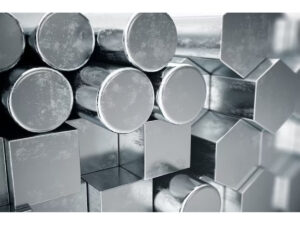
Global stainless steel production in January-September this year increased by 3% compared to the same period last year, from 46.623 million tons to 48.020 million tons.
These figures are given in a press release from the International Stainless Steel Association (formerly the International Stainless Steel Forum, ISSF).
According to the information, in the third quarter of 2025, production reached 16.1 million tons, which is 2.3% more than in July-September 2024.
At the same time, stainless steel output in Europe decreased by 4.2% to 4.498 million tons during this period. In the US, production increased by 9.3% to 1.649 million tons.
In Asia (excluding China and South Korea), stainless steel production increased by 1.1% to 10.771 million tons, and in China, it increased by 4.7% to 30.453 million tons.
In other regions (Brazil, Russia, South Africa, South Korea, and Indonesia), production fell by 5.7% to 649,000 tons.
As reported, global stainless steel production in 2024 increased by 7% compared to 2023, to 62.621 million tons from 58.539 million tons, with production growing in all major regions.
At the same time, stainless steel production in Europe in 2024 increased by 1.5% to 6.088 million tons. In the US, production increased by 6.9% to 1.950 million tons. In Asia (excluding China and South Korea), stainless steel production increased by 6.4% to 7.322 million tons, and in China it grew by 7.5% to 39.441 million tons. In other regions (Brazil, Russia, South Africa, South Korea, and Indonesia), production increased by 9.2% to 7.820 million tons.
Global stainless steel production in 2023 increased by 4.6% compared to 2022, to 58.444 million tons. Overall, stainless steel production in Europe fell by 6.2% to 5.902 million tons this year, and in the US by 9.6% to 1.824 million tons. Meanwhile, in Asia (excluding China and South Korea), stainless steel production decreased by 7.2% to 6.880 million tons, while in China it increased by 12.6% to 36.676 million tons. Other regions (Brazil, Russia, South Africa, South Korea, and Indonesia) saw a 5.2% decline in production to 7.163 million tons.
Global stainless steel production in 2022 decreased by 5.2% compared to 2021, to 55.255 million tons. At the same time, production in Europe fell by 12.4% to 6.294 million tons, and in the US by 14.8% to 2.017 million tons. In Asia (excluding China and South Korea), stainless steel production decreased by 4.9% to 7.411 million tons, and in China by 2% to 31.975 million tons. Other regions saw a 9.1% decline in production to 7.557 million tons.
Earlier, the Experts Club information and analytical center released a video dedicated to global steel production and leading producing countries – https://www.youtube.com/shorts/VgUU9MEMosE
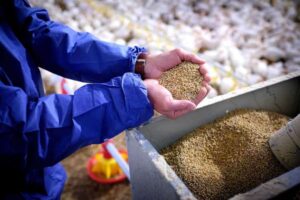
Khorol Mechanical Plant (Ukraine) has begun the process of localizing production in Turkey, according to the information and analytical agency APK-Inform, citing information from Valentin Surmach, director of the technical department at KMP.
“Taking into account the successful experience of joint implementation of complex projects, Izvik Makina Muhendislik Ic Ve Dis Ticaret Limited Sirketi has been selected as the main partner in the localization process,” he said at the AgroFood Summit-2025 international conference (Mersin, Turkey).
According to him, the localization stages include large-scale assembly, equipping products with electric motors and gear motors from Turkish manufacturers, and the phased organization of the production of components and parts in Turkey, including on the basis of outsourcing (by mutual agreement).
The plant confirms the warranty for equipment manufactured in the localization process, as well as the technical parameters of the technological lines based on the plant’s equipment, which Izvik Makina offers to its customers.
Khorol Mechanical Plant is a Ukrainian enterprise specializing in the manufacture of equipment for grain storage and cleaning; production of mixed fodder, cereals, flour, oil, seed material; aspiration systems; mechanical grain transportation; production of fuel pellets, briquettes, etc.
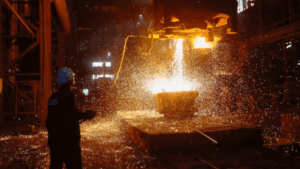
Global steel production in October 2025 decreased by 5.9% compared to October 2024, to 143.340 million tons, with declines recorded in most of the top ten producing countries, according to data from the World Steel Association (Worldsteel).
The top ten countries in terms of steel production in October 2025 are as follows:
China – 72 million tons (down 12.1% compared to October 2024);
India – 13.563 million tons (up 5.9%);
USA – 6.989 million tons (up 9.4%);
Japan – 6.853 million tons (down 1%);
Russia – 5.250 million tons (down 6.2%);
South Korea – 5.093 million tons (down 5.8%);
Iran – 3.316 million tons (up 12%);
Turkey – 3.208 million tons (up 3.1%);
Germany – 3.127 million tons (down 3%);
Brazil – 2.988 million tons (down 2.7%).
In January-October 2025, global steel production decreased by 2.1% compared to the same period in 2024, to 1 billion 517.589 million tons. The top ten producing countries for the first ten months of this year are:
China – 817.870 million tons (down 3.9% compared to January-October 2024);
India – 135.987 million tons (up 10%);
USA – 68.376 million tons (up 2.8%);
Japan – 67.327 million tons (down 4.1%);
Russia – 56.536 million tons (down 4.9%);
South Korea – 51.144 million tons (down 3.6%);
Turkey – 31.277 million tons (up 1.2%);
Germany – 28.505 million tons (down 9.9%);
Brazil – 27.988 million tons (down 1.8%);
Iran – 25.442 million tons (down 1%).
At the end of 2024, 71 countries produced 1 billion 839.449 million tons of steel, which is 0.9% less than in 2023. The leaders were China – 1 billion 5.090 million tons (down 1.7%), India – 149.587 million tons (up 6.3%), Japan – 84.009 million tons (down 3.4%), the United States – 79.452 million tons (down 2.4%), Russia – 70.690 million tons (down 7%), South Korea – 63.531 million tons (down 4.7%), Germany – 37.234 million tons (up 5.2%), Turkey – 36.893 million tons (up 9.4%), Brazil – 33.741 million tons (up 5.3%), and Iran – 30.952 million tons (up 0.8%).
In 2023, 71 countries produced 1 billion 849.734 million tons of steel (down 0.1% from 2022), and in 2022, 64 countries produced 1 billion 831.467 million tons (down 4.3% from 2021), with China continuing to dominate and production growing in India amid declining performance in most developed economies.
Earlier, the Experts Club analytical center released a video analysis of the world’s leading steel producers from 2001 to 2024 – https://youtube.com/shorts/VgUU9MEMosE?si=c5yD04gmNtJoFblB
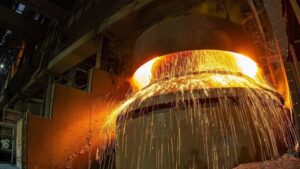
Metinvest, Ukraine’s largest mining and metallurgical holding company, reduced steel production by 10% year-on-year to 1.455 million tons in January-September this year.
According to a press release from the parent company Metinvest B.V. on the results of its operating activities for Q3 2025, the decline in production was due to the full-scale military invasion of Ukraine.
As a result, the capacity utilization rate of the group’s plants in Ukraine was affected by factors related to security, personnel, electricity, logistics, and the economy. In 2025, Russia intensified its large-scale attacks on
Ukraine’s energy and gas infrastructure. In October, after the reporting period, this led to damage to the power supply systems at two of the group’s facilities in the mining and metallurgical segments, resulting in a decline in production.
In the third quarter of 2025, pig iron and crude steel production at Kamet Steel increased by 41% and 30% compared to the previous quarter, respectively, to 497 thousand tons and 546 thousand tons. The growth was due to the overhaul of blast furnace No. 9 in April-June 2025 and its higher productivity in the reporting period.
In the first nine months of 2025, pig iron production decreased by 6% compared to the same period last year to 1.285 million tons, mainly due to the overhaul of blast furnace No. 9 at Kamet Steel. As a result, crude steel production decreased by 10% compared to the same period last year to 1.455 million tons.
Pig iron and steel production in the third quarter of 2025 doubled compared to the previous quarter to 267 thousand tons, due to an increase in hot metal production. In the first nine months of 2025, production of semi-finished products fell by 9% year-on-year to 568,000 tons due to a decline in steel production and an increase in domestic consumption of billets at subsequent stages of production.
In the third quarter of 2025, finished product production decreased by 6% year-on-year to 591 thousand tons due to scheduled maintenance of rolling mills in Italy and Bulgaria in August. In particular, flat product production decreased by 8% to 265 thousand tons, and long product production decreased by 4% to 326 thousand tons.
In the first nine months of 2025, finished product production increased by 8% year-on-year to 1.818 million tons. In particular, flat steel production increased by 12% to 817,000 tons due to the resumption of hot-rolled coil production at the Ferriera Valsider plant (Italy), while long steel production increased by 5% to 1.001 million tons.
In the third quarter of 2025, coke production increased by 4% compared to the previous quarter to 287,000 tons after the launch of additional chambers of coke oven battery No. 2 at the Zaporizhzhya Coke Chemical Plant in June 2025. In the first nine months of 2025, coke production decreased by 3% to 821,000 tons due to the shutdown of coke oven battery No. 1 at Kametstal.
At the same time, in the third quarter of 2025, total iron ore concentrate production amounted to 3.989 million tons, which remained almost unchanged compared to the previous quarter, while commercial iron ore production increased by 4% to 3.928 million tons. Iron ore pellet production increased by 7% to 1. million tons due to the overhaul of the roasting machine at the Central Iron Ore Plant in the previous quarter, while iron ore concentrate production remained almost unchanged at 2.226 million tons.
In the first nine months of 2025, total iron ore concentrate production decreased by 4% compared to the same period last year to 11.713 million tons, as operations at the Ingulets open pit were suspended in July 2024. This was partially offset by increased production at the Hannivskyi open pit. Commercial iron ore production remained almost unchanged year-on-year at 11.456 million tonnes, including a 6% decline in iron ore concentrate production and a 9% increase in pellet production.
In December 2024, operations at the Pokrovskoye Coal production site were suspended due to intensified hostilities and developments on the front line. Subsequently, due to power shortages and a further deterioration in the security situation, both the mine and the enrichment plant suspended operations.
In addition, the group is considering the sale of United Coal (US) and its exclusion from its financial statements for the first half of 2025. This is due to the negative impact of geological difficulties, depletion of coal reserves, higher logistics costs, and a steady decline in coking coal prices.
As reported, Metinvest increased steel production by 4% in 2024 compared to 2024, to 2.099 million tons, while total iron ore production increased by 42%, to 15.733 million tons. At the same time, commercial iron ore concentrate production grew by 58% to 14.826 million tons. Coke output in 2024 decreased by 10% to 1.122 million tons. Metinvest increased its total production of pellets by 14% to 6.022 million tons, but reduced its total output of coking coal concentrate by 22% to 4.277 million tons.
Metinvest is a vertically integrated group of mining and metallurgical enterprises. Its enterprises are located in Ukraine, in the Donetsk, Luhansk, Zaporizhzhia, and Dnipropetrovsk regions, as well as in the European Union, the United Kingdom, and the United States.
The main shareholders of the holding are SCM Group (71.24%) and Smart Holding (23.76%). Metinvest Holding LLC is the managing company of the Metinvest Group.
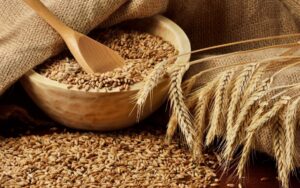
According to the Food and Agriculture Organization of the United Nations (FAO) and the United States Department of Agriculture (USDA), global wheat production in 2025 is forecast to reach around 809.7 million tons, which is 1.3% higher than in 2024.
The growth is expected to be driven by increased yields in Canada, Kazakhstan, China, and India, while southern Europe and North Africa remain at risk of lower production due to drought.
“The outlook for the global wheat market remains generally positive, and global stocks at the end of the season will remain stable despite active exports from the Black Sea region,” the FAO Cereal Supply and Demand Brief notes in its October review.
Top 20 countries in the world by wheat production in 2025 (FAO and USDA estimates)
These twenty countries produce more than 90% of the world’s wheat.
Despite overall growth in yields, global wheat stocks could decline by 1.6% to around 312 million tons by the end of 2025. This is due to increased domestic consumption in Asia and the Middle East, as well as active exports from Russia, Ukraine, and Australia.
Average global wheat prices remain volatile, but FAO analysts predict their relative stabilization while maintaining harvest and stock volumes.
Despite the war, Ukraine retains its status as one of the largest grain exporters. According to estimates by the Ministry of Agrarian Policy, in the 2024–2025 marketing year, the country exported about 15 million tons of wheat, supplying it to Egypt, Indonesia, Spain, Turkey, and Tunisia.
Ukraine ranks 11th–12th in the world in wheat production and is among the top five global exporters thanks to its high yields and logistics routes through the Danube and Baltic ports.
A detailed overview of the world’s major wheat producers from 1970 to 2024 can be found in the Experts Club analytical video: Watch on YouTube